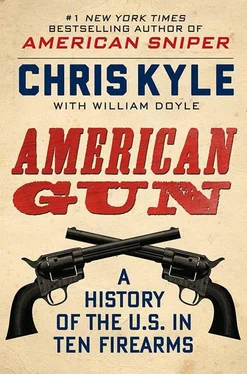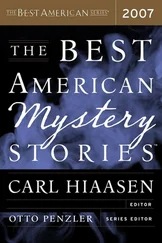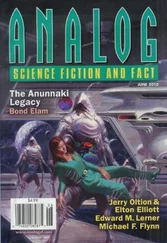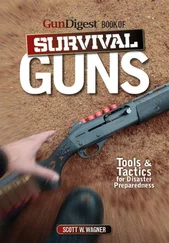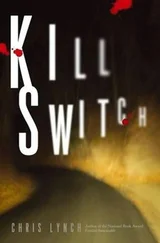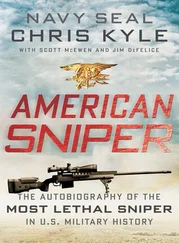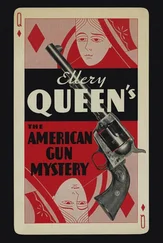Most of my sniper kills in Iraq were made with weapons chambering a .300 Win Mag. The Winchester Magnum round was developed after the 30-06, and in fact the round was first wildcatted, or made privately, after Winchester introduced the cartridges in three other sizes. The new ammo gave more punch to the Model 70 rifle, letting it reach out and touch someone just a little farther than before.
Over the course of my career, I used a number of different bolt-action weapons chambering that particular ammo. Early on, my best combo was probably a gun that used McMillan stocks, customized barrels, and a Remington 700 action. Later on, I shot a weapon from Accuracy International that had a slightly shorter barrel and a folding stock.
I would imagine that most serious hunters are familiar with the Remington 700 rifle and its bolt-action. Running through all the possible variations would take the better part of a day; that’s how popular this particular platform has been. Another measure of its success is its adoption by many military forces, police departments, and SWAT teams as the weapon of choice for their long-range shooters. Most famously, the Army’s M24 Sniper Weapon System is made by Remington and based on the Remington 700 rifle. The Navy’s MK13 sniper weapon is also based on the Remington action, though it uses a different chasis.
The Remington family is so popular that many manufacturers make a ton of accessories, add-ons, and replacements for it. From the days of the Revolution and our friend Tim Murphy, shooters have always wanted to have a little personal touch on their weapon, with customized triggers, stocks, cheekpieces; you name it. You’ve got to constantly look for an edge anywhere you can find it.
Remington’s recent ad campaign puts this gun’s popularity in perspective. Above a photo of a modern stainless sporting version of the Model 700 the headline reads, “Over 5,000,000 sold. The world’s largest army ain’t in China.”
One of my favorite personal sniper weapons was a highly customized Mk 13 put together just for me by a friend and fellow SEAL named Monty LeClair. I met Monty when he was a sniper instructor. I’d already seen some of the work he’d done on guns for himself when I picked up a rifle of his one day. As soon as I held it, I knew I had to have one for myself.
We ordered a bunch of parts and went to work. Monty started by taking a Remington 700 action and truing it. This meant going over the workings until they were to exact specifications, removing what for most people wouldn’t even be considered blemishes. He put a Rock Creek barrel on it, and then added a number of other high-tech, top-shelf parts. One of Monty’s little personal touches had to do with the way he bedded it into the Accuracy International chassis he used. There’d been the tiniest external warp to the action, and he cured any flaw that might have caused.
When he was done, the weapon was a sub-half MOA gun, or accurate to within a half-minute of angle when fired at a target at one hundred yards away. It’s a standard snipers and marksmen use to gauge a gun’s accuracy without interference from the shooter. In this case, it meant that five military spec bullets hit less than a half-inch apart when fired. Rifles have been improving steadily over the past few years, but that’s a damn good grouping by any measure.
Monty’s been building guns since he was a teenager, and taking them apart before that. He probably hasn’t met a weapon he doesn’t think he can improve on. Chief LeClair is still in the Navy, but he ought to eye a career as a gunmaker if he ever retires.
Toward the end of my service as a SEAL, we started working with guns that fired the .338 cartridge, a larger round that in the right weapon has tremendous power and range. The .338 Lapua Magnum round is a great option; in fact, it’s the ammunition I was shooting when I got my longest kill, at some 2,100 meters outside Baghdad. I was able to use both a McMillan and an Accuracy International version of the 338; I was on the McMillan when I made that shot. The bullet shoots farther and flatter than a .50 caliber, weighs less, costs less, and will do just as much damage. While the guns are heavier than those designed to fire a WinMag, they’re a good sight lighter than a .50. They’re awesome weapons.
In case you’re wondering, the round is named Lapua after the Finnish company that developed it in the 1980s. The bullet was first intended for a gun being developed by Research Armament Industries in Arkansas to meet a Marine Corps requirement for a new long-range sniper weapon to replace .50 caliber sniper guns. The gun, known as the Haskins rifle after its designer Jerry Haskins, influenced a new generation of designs.
To stand up to the round, the gun required a thick bolt and a wider frame for the action; one of the first companies to produce such a weapon was Mauser, which came out with a .338 Magnum SR93. A lot had changed in a hundred and twenty years since their rifles buzzed past TR’s ears, but the company, now a subsidiary of Sig-Sauer, still aimed for the cutting edge of gun design.
Since we’re talking about sniper weapons and the cutting edge, I should mention that some of the most important developments in the technology have come in the area of optics. There’s no sense having a gun that will shoot 2,000 meters if you can’t see what you’re aiming at. Improvements in scopes and guns are being made every day. And then there’s this: One system I looked at recently allowed the gun—or more specifically its computer—to decide when to take the shot. With that system, say its developers, anyone can be a sniper.

Here I am with my Lapua .338, a distant relative of the bolt-action M1903.
The Kyle family
I don’t know about that.
The sighting system sure is sweet, and the gun definitely packs a wallop. Is it the future? I guess we’ll find out.
The Springfield M1903 enjoyed a long run. It lives on today not only in the hands of collectors and shooters who like its solid feel, but in movies and classic novels. Steve McQueen handled a Springfield in The Sand Pebbles, and an M1903 with a telescopic sight was used by the sniper played by Barry Pepper in Saving Private Ryan. Ernest Hemingway and Kurt Vonnegut wrote Springfields into their stories, and in James Jones’s From Here to Eternity, soldiers drilled with Springfields and fire them at Japanese aircraft on December 7, 1941.
But another gun developed in the pre–World War I era had an even greater role in movies and popular culture.
I’m talking about the M1911 pistol, standard sidearm for the U.S. military from 1911 to 1985, and the gun that defined semi-automatic pistol for several generations of Americans.
6
THE M1911 PISTOL
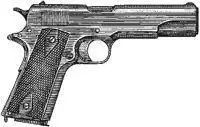
“Beyond a doubt, there is no other service handgun made in the lifespan of the Colt .45 that can equal—or even approach—that of the M1911 Government Model when it comes to resolving conflicts, stopping fights, and keeping Americans alive and fighting.”
—Wiley Clapp, American Rifleman
On October 18, 1918, a tall, red-haired American Army corporal found himself behind enemy lines in the Argonne Forest in France.
German machine gunners on a nearby ridge were sweeping the bushes around him with bullets. A slug slapped a hole in his helmet, though it somehow left his skull intact.
Читать дальше
